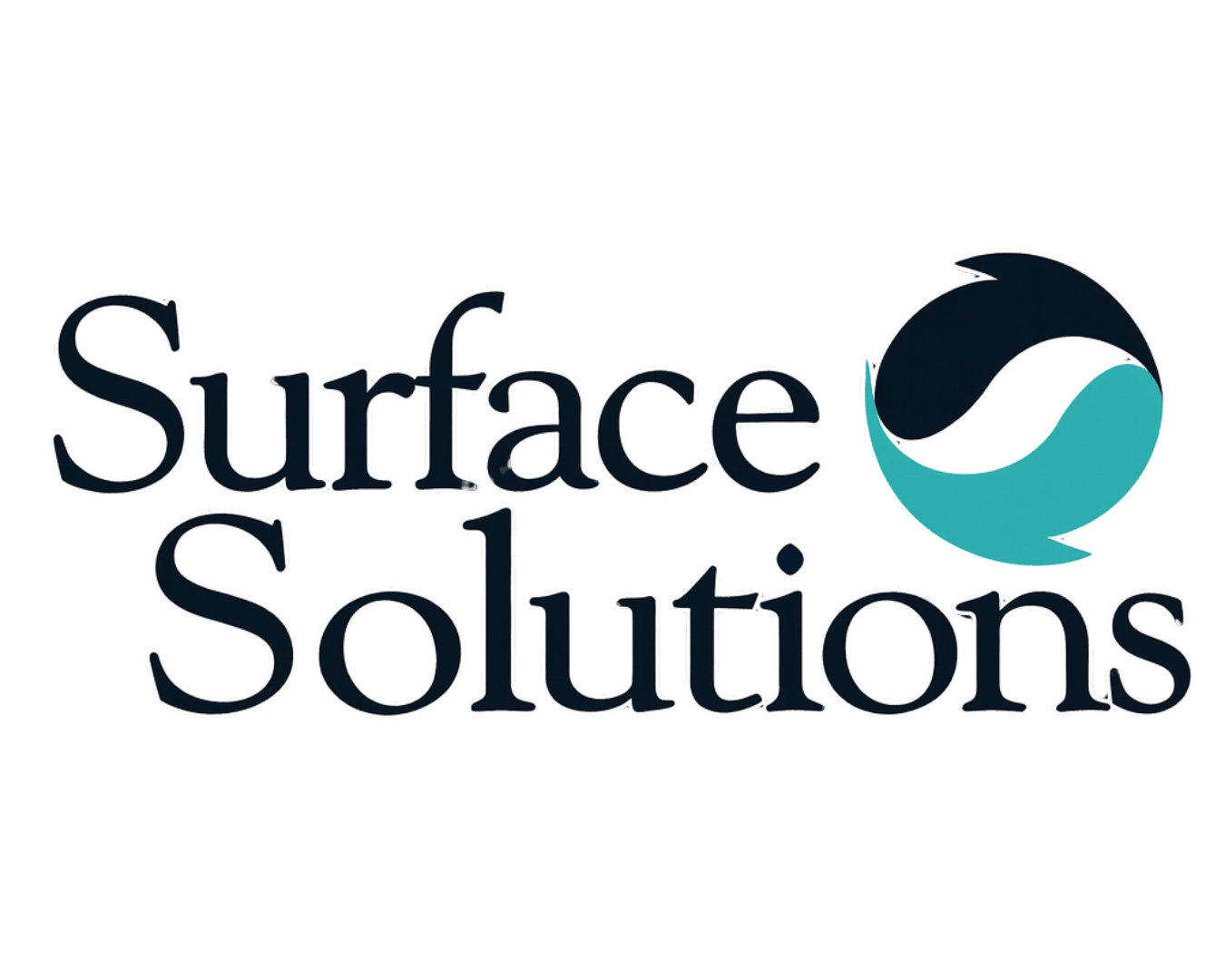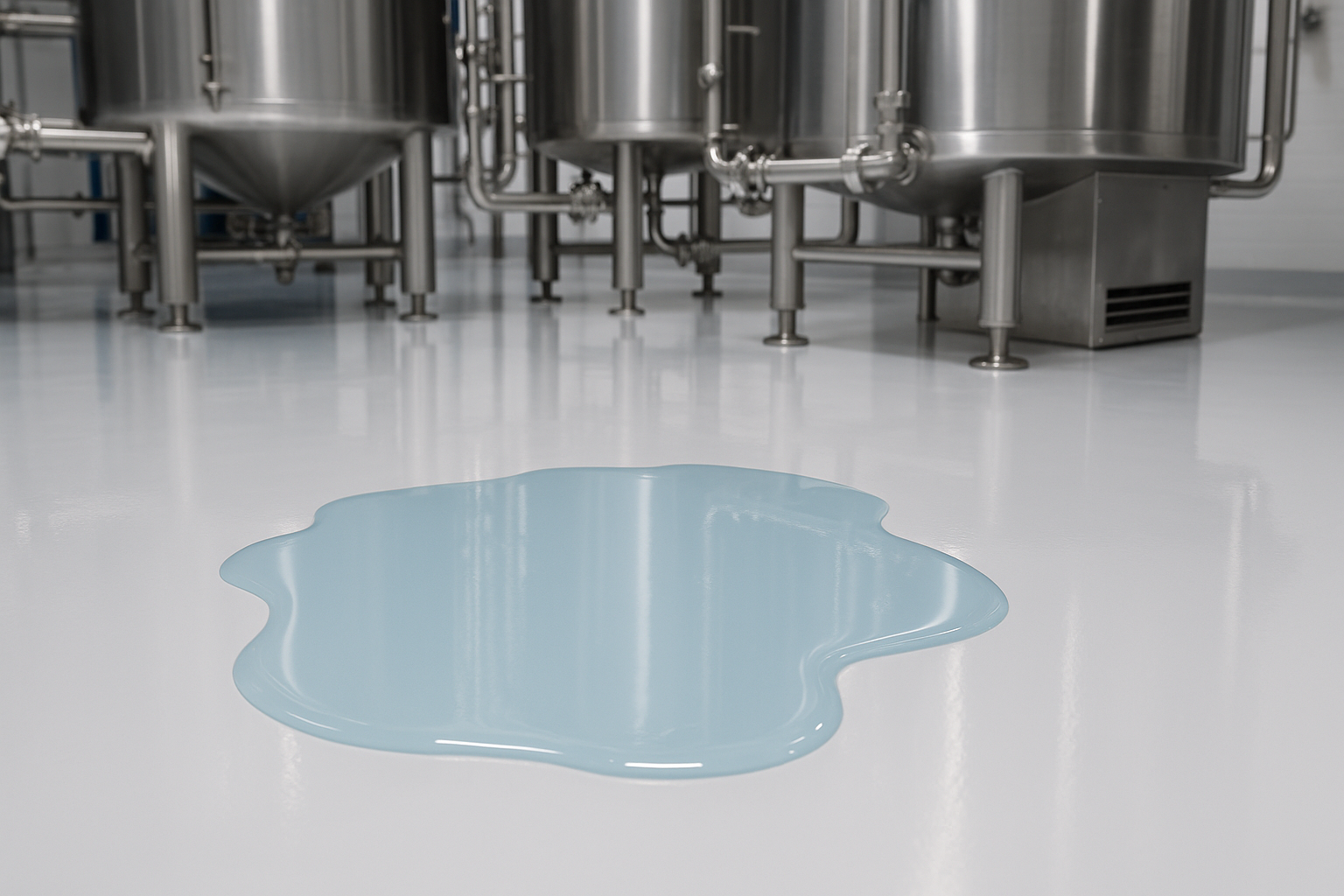Why Chemical Resistance Matters
Concrete may seem strong, but it is highly porous. When exposed to chemicals, unprotected concrete can:
- Absorb spills, leading to permanent stains
- Erode, spall, or dust over time
- Allow contaminants to leach into the soil beneath the slab
- Become slick or unsafe for workers
This isn’t just a cosmetic issue — it’s a major safety, environmental, and compliance concern.
Industries Most at Risk
- Pharmaceutical Manufacturing: Alcohols, acids, and cleaning agents can break down flooring.
- Food & Beverage: Sugars and acids attack concrete and create bacterial harborage points.
- Automotive & Aerospace: Oils, fuels, and solvents require chemical-resistant coatings.
- Chemical Processing: Strong acids/alkalis can eat through standard flooring systems.
- Healthcare & Labs: Sanitizing agents used daily can degrade flooring if not protected.
Flooring Solutions for Chemical Resistance
Epoxy Coatings:
- Excellent resistance to many acids, alkalis, and solvents
- Can be installed with broadcast quartz for slip resistance
- Seamless and easy to clean
Novolac Epoxy Systems:
- Higher chemical resistance than standard epoxies
- Ideal for secondary containment areas or strong acid environments
Cementitious Urethane:
- Superior thermal-shock and chemical resistance
- Excellent choice for food plants with hot water washdowns
Hybrid Systems:
- Combining epoxy primer with urethane topcoat for maximum performance
- Perfect for environments needing both chemical resistance and durability
Key Benefits of Chemical-Resistant Flooring
- Protects the Slab: Prevents costly structural damage
- Improves Safety: Reduces slip risk and exposure to harmful substances
- Supports Compliance: Helps meet EPA, OSHA, FDA, and USDA regulations
- Simplifies Cleaning: Allows for strong sanitizers without damaging floor
Surface Solutions’ Process
- Site Evaluation: Identify all chemical exposures (MSDS review)
- System Recommendation: Match resin chemistry to exposure profile
- Surface Preparation: Shot blasting or grinding for proper adhesion
- Installation: Multi-layer system designed for long-term protection
- Verification: Optional chemical-resistance testing on installed system
Case Example
We recently completed a project for a pharmaceutical manufacturer whose existing floor was failing due to constant exposure to alcohol-based cleaning agents. By installing a novolac epoxy system with chemical-resistant urethane topcoat, we:
- Extended floor lifespan by over 10 years
- Reduced maintenance downtime by 30%
- Improved employee safety with slip-resistant finish
Protect Your Facility Before the Next Spill
Call 877-CSTM-FLR
Email carolina@cstmflr.com Visit www.cstmflr.com
A single spill shouldn’t mean a costly floor replacement. Get a system designed for your chemicals — and your industry.


.png)
